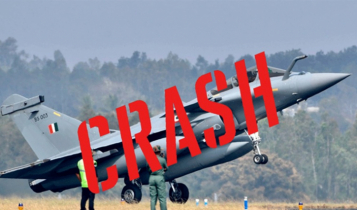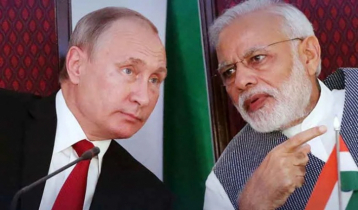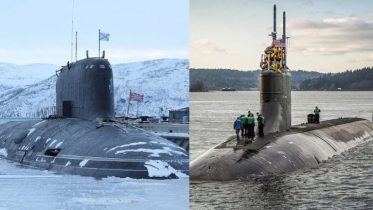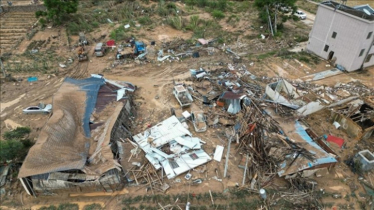Who Leads in Nuclear Submarine Power: The US or Russia?
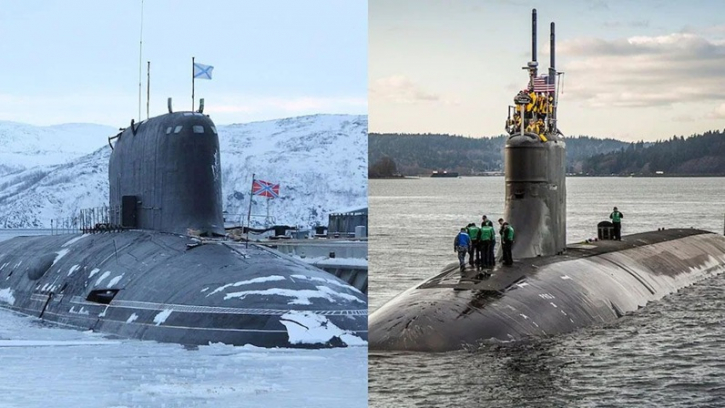
Published : 14:05, 3 August 2025
U.S. President Donald Trump has ordered the redeployment of two nuclear submarines closer to Russia, in response to what he called “provocative remarks” made by former Russian President Dmitry Medvedev.
In a post on his social media platform Truth Social on Friday (August 1 local time), Trump announced that the submarines were being repositioned in light of Medvedev’s “highly provocative comments” earlier this week.
While the Kremlin has yet to respond officially, senior Russian lawmaker Viktor Vodolatsky warned that Russia has additional nuclear submarines deployed globally, ready to counter any threat near its borders.
The tense exchange has revived a critical question in global military affairs:
Who holds greater power beneath the seas—The United States or Russia?
Let’s take a comparative look at the nuclear submarine fleets of both nations:
United States' Nuclear Submarine Fleet
The U.S. Navy operates the Ohio-class ballistic missile submarines (SSBNs), nicknamed “boomers.” Their key features include extreme stealth and precise nuclear strike capability. The U.S. currently maintains at least 14 Ohio-class SSBNs, each capable of operating for 15 years without major overhaul.
Each submarine can carry up to 20 SLBMs (Submarine-Launched Ballistic Missiles)—primarily Trident II D5 missiles.
The U.S. also fields three classes of nuclear-powered attack submarines (SSNs):
- Virginia-class
- Seawolf-class
- Los Angeles-class (also known as 688-class)
These are equipped with Tomahawk missiles, Harpoon missiles, and MK-48 torpedoes, designed for anti-ship warfare, surveillance, intelligence gathering, and mine-laying.
The Virginia-class is the most advanced SSN series, with specialized features for covert operations and diver lock-in/lock-out chambers. Notable vessels include the USS Hawaii, USS North Carolina, and USS Missouri. The U.S. currently operates 24 Virginia-class submarines.
The Seawolf-class includes only three submarines, which lack vertical launch systems but have eight torpedo tubes and space for 50 weapons.
The Los Angeles-class remains the backbone of the fleet, with at least 24 active submarines. Designed during the Cold War to counter the Soviet threat, these subs are known for speed, silence, and reliability. Over time, Virginia-class subs will replace them.
Total U.S. nuclear-powered submarines: approximately 51.
Russia’s Nuclear Submarine Fleet
Russia's submarine force is regarded as the largest in the world, with an estimated 64 submarines, including around 14 SSBNs forming the core of its strategic deterrent. These include Borei-class and Delta IV-class submarines.
The Borei-class is Russia’s most advanced SSBN. Currently, eight Borei-class subs are operational. Each carries 16 Bulava SLBMs and six 533mm torpedo tubes. They are also equipped to launch anti-submarine rockets and seabed-deployed mines, with crews of over 100 personnel.
Russia also deploys four Yasen-class nuclear-powered submarines, known for their smaller size and reduced crew. These submarines can carry five 3M54-1 Kalibr missiles or four P-800 Oniks cruise missiles, capable of long-range strikes against sea and land targets.
Additionally, Russia maintains about five Akula-class submarines (named “shark” in Russian). These were developed in response to the U.S. Los Angeles-class and are capable of carrying Kalibr, Oniks, Granit missiles, and torpedoes.
Both the United States and Russia possess formidable and technologically advanced nuclear submarine fleets with distinct doctrines:
- The U.S. emphasizes stealth, precision, and global power projection.
- Russia fields a larger number of diverse submarines, focusing on strategic deterrence and multi-role flexibility.
As tensions rise again in the oceans, questions of undersea supremacy are no longer Cold War history—they’re part of today’s high-stakes geopolitical chessboard.
Source: NDTV

.png)
.png)
